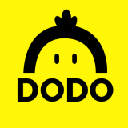Cryptocurrency Encyclopedia
Explore the future together and let everyone know the world of cryptocurrency equally!
-
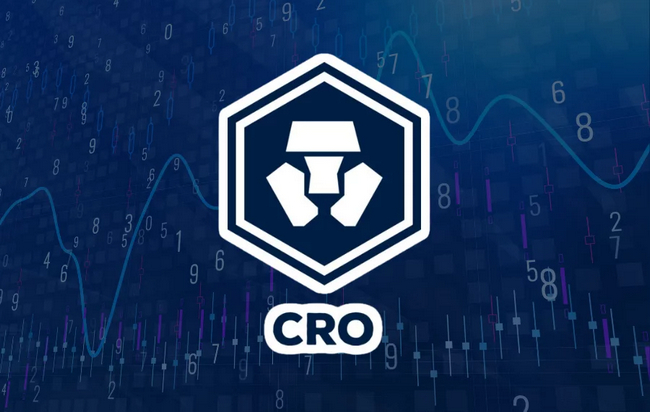
- What is CRO coin? What can CRO coins do? How to store CRO coins?
- Sep 18,2024 at 05:54pm
CRO Coin: An Overview and Its Capabilities
Understanding the CRO Coin
Crypto.com Coin (CRO) is the native cryptocurrency of Crypto.com, a reputable platform offering a diverse range of crypto-related services like the Crypto.com Exchange and the Crypto.com Pay application. The CRO coin is an essential component of the Crypto.com ecosystem, offering several benefits and use cases.
Capabilities of CRO Coins
CRO coins serve multiple functions within the Crypto.com ecosystem, including:
Staking Rewards: By staking CRO coins on the Crypto.com DeFi Wallet or Crypto.com Exchange, holders can earn rewards in the form of additional CRO coins.
Staking Benefits: Staking CRO coins earns users access to various perks, such as enhanced rewards, reduced trading fees, and increased transaction limits.
Payment Currency: CRO coins can be used for making purchases on the Crypto.com App and merchants that accept Crypto.com Pay.
Discounts and Cashback: Users can enjoy discounts on trading fees and earn cashback rewards when using CRO coins.
Governance: CRO coin holders can participate in community voting and decision-making processes that shape the future of the Crypto.com ecosystem.
Storing CRO Coins
There are several options available for storing CRO coins securely:
Crypto.com Defi Wallet: This is an official non-custodial wallet from Crypto.com that provides complete control of your CRO coins.
Crypto.com Exchange: You can store CRO coins on the Crypto.com Exchange, a reputable platform with a proven track record of security and reliability.
Hardware Wallets: For enhanced security, you can transfer CRO coins to hardware wallets like Ledger or Trezor.
Software Wallets: Software wallets such as Metamask or Trust Wallet can also be used to store CRO coins, offering a convenient way to manage your cryptocurrency.
Conclusion
The CRO coin is an integral part of the Crypto.com ecosystem, providing a wide range of benefits and use cases. From staking rewards and staking benefits to payment currency and governance, CRO coins empower users to engage fully with the Crypto.com platform. With various options available for secure storage, CRO coin holders can confidently manage and utilize their cryptocurrency within a reputable and well-established crypto-services ecosystem.
-
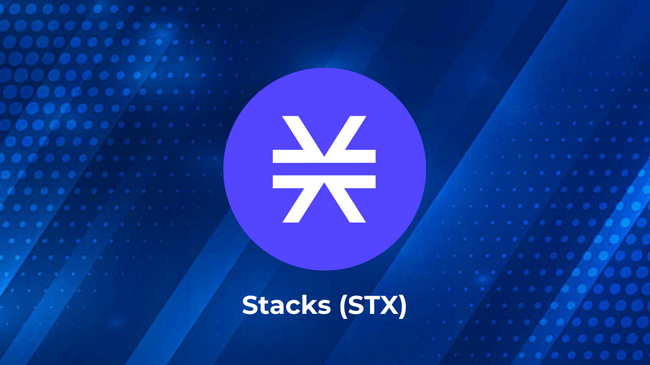
- What can STX coins be used for? A comprehensive analysis of the application scenarios of STX coins
- Sep 18,2024 at 03:08pm
What can STX coins be used for? A comprehensive analysis of the application scenarios of STX coins
STX coin, the native token of the Stacks blockchain, has a wide range of applications within the Stacks ecosystem. Here are some of the key use cases for STX coins:
Staking: STX holders can stake their coins to earn rewards and support the security of the Stacks blockchain. Stakers receive a portion of the transaction fees generated on the network, proportional to the amount of STX they have staked.
Governance: STX holders have the ability to participate in the governance of the Stacks blockchain. They can vote on proposals that affect the development and direction of the network, such as changes to the consensus algorithm or the allocation of funds.
Payment fees: STX is used to pay transaction fees on the Stacks blockchain. These fees are required to compensate miners for processing transactions and maintaining the network.
Smart contracts: STX is used to pay for the execution of smart contracts on the Stacks blockchain. Smart contracts are programs that run on the blockchain and can be used to automate a wide variety of tasks, such as transferring funds, executing agreements, and storing data.
Decentralized applications: STX is used to power decentralized applications (dApps) that are built on the Stacks blockchain. These dApps offer a range of services, such as decentralized finance (DeFi), gaming, and social media.
Non-fungible tokens (NFTs): STX is used to create and trade NFTs on the Stacks blockchain. NFTs are unique digital assets that can represent ownership of real-world items, such as art, music, and collectibles.
In addition to these core use cases, STX coins can also be used for a variety of other purposes, such as:
Collateral: STX can be used as collateral for loans on DeFi platforms. This allows users to borrow funds without having to sell their STX coins.
Rewards: STX can be earned as rewards for participating in various activities on the Stacks blockchain, such as running a node or participating in governance.
Investment: STX coins can be bought and sold on cryptocurrency exchanges. Investors can speculate on the price of STX or hold it as a long-term investment.
As the Stacks ecosystem continues to grow and develop, new use cases for STX coins are likely to emerge. The versatility of STX makes it a valuable asset for a wide range of applications in the blockchain space.
-
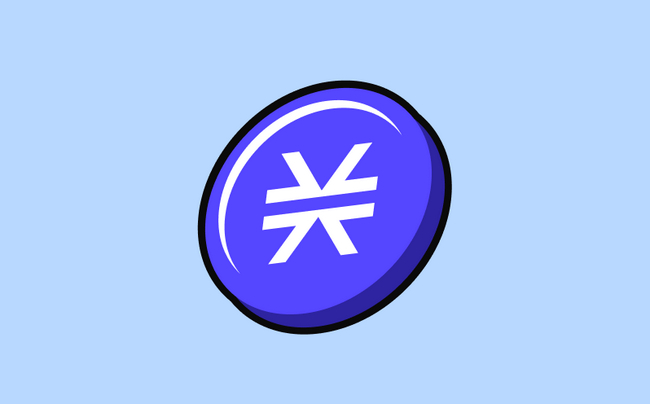
- What are the regular platforms for STX coins? An inventory of regular platforms for STX coin trading
- Sep 18,2024 at 03:06pm
Regular Trading Platforms for STX Coins
Overview
Stacks (STX) is a layer-1 blockchain solution that aims to bridge bitcoin to smart contracts and decentralized applications (dApps). Investors and traders can acquire STX coins through various regular cryptocurrency trading platforms.
List of Regular Trading Platforms
Binance
Crypto.com
KuCoin
Huobi
OKX
Gate.io
Bitstamp
Poloniex
Coinbase Pro
Kraken
Factors to Consider When Selecting a Platform
When choosing a trading platform for STX coins, it is important to consider the following factors:
Reputation and Trustworthiness: Opt for reputable platforms with a proven track record of security and reliability.
Trading Fees: Compare the trading fees charged by different platforms to minimize costs.
Liquidity: Select platforms with high liquidity to ensure smooth trading and minimize slippage.
Supported Currencies: Consider platforms that support the desired deposit and withdrawal methods for fiat currency or other cryptocurrencies.
User Interface: Choose platforms with intuitive and user-friendly interfaces for ease of navigation and trading.
Security: Verify that platforms implement robust security measures, such as two-factor authentication, SSL encryption, and cold storage for assets.
Customer Support: Excellent customer support is crucial for resolving queries and addressing any issues promptly.
Conclusion
The aforementioned platforms are reputable and reliable options for trading STX coins. By carefully considering the factors outlined, investors can select the most suitable platform for their specific needs and preferences. Additionally, it is always advisable to conduct thorough research and due diligence before making any trading decisions.
-
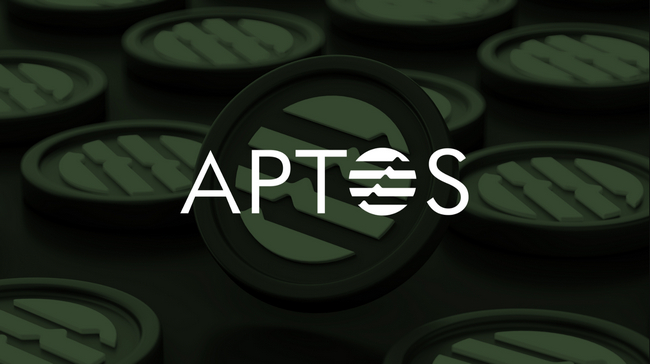
- What is APT coin? What can APT coins do? How to store APT coins?
- Sep 18,2024 at 01:56pm
APT Coin: A Comprehensive Overview
What is APT Coin?
APT, short for Aptos, is the native cryptocurrency of the Aptos blockchain, a proof-of-stake (PoS) blockchain platform known for its high scalability and low latency. Aptos was founded in 2022 by former employees of Meta (formerly Facebook).
What Can APT Coins Do?
APT coins have several use cases within the Aptos ecosystem:
Transaction Fees: APT tokens are used to pay transaction fees on the Aptos blockchain.
Governance: APT holders have the right to participate in the governance of the Aptos blockchain by proposing and voting on changes to the protocol.
Staking: APT tokens can be staked to earn rewards and participate in securing the network.
Smart Contract Interactions: APT coins can be used as payment or incentives for smart contract interactions on the Aptos blockchain.
How to Store APT Coins?
APT coins can be stored in various ways, including:
Official Aptos Wallet: The Aptos wallet, available for desktop and mobile devices, is the recommended way to store and manage APT coins.
Hardware Wallets: Hardware wallets, such as Ledger or Trezor, provide a secure offline method of storing APT coins.
Software Wallets: Software wallets, such as MetaMask or Coinbase Wallet, can also be used to store APT coins but offer less security than hardware wallets.
Centralized Exchanges: Centralized exchanges, such as Binance or Coinbase, allow users to store and trade APT coins, but it is not recommended to keep large amounts of funds on exchanges due to security risks.
Conclusion
APT is the native cryptocurrency of the Aptos blockchain, a high-performance blockchain platform. APT coins have various use cases within the Aptos ecosystem, including paying transaction fees, participating in governance, and staking. For secure storage, APT coins can be stored in the official Aptos Wallet, hardware wallets, software wallets, or on centralized exchanges with caution.
-
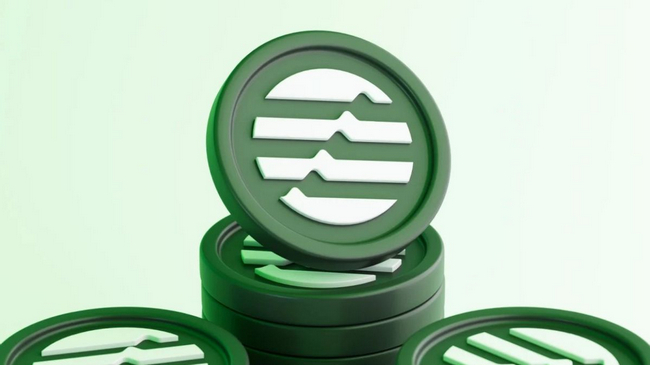
- What are the APT coin trading platforms? APT coin platform app rankings in 2024
- Sep 18,2024 at 01:48pm
What Are the APT Coin Trading Platforms? APT Coin Platform App Rankings in 2024
Introduction
Aptos (APT) is a next-generation Layer 1 blockchain platform designed for scalability, security, and developer-friendliness. Its native token, APT, is used to pay for transaction fees, staking, and governance. As the APT ecosystem grows, various trading platforms have emerged to facilitate the buying, selling, and trading of APT coins. This article explores the top APT coin trading platforms in 2024, ranking them based on their overall features, security, fees, and user experience.
Top APT Coin Trading Platforms in 2024
1. Binance
Binance is the world's largest cryptocurrency exchange by trading volume. It offers a comprehensive platform for trading APT and other crypto assets. Key features of Binance include:
High liquidity
Low fees
User-friendly interface
Advanced trading tools
2. FTX
FTX is another leading cryptocurrency exchange known for its innovative features. It provides a wide range of trading options for APT, including spot, margin, and futures trading. FTX offers:
Low maker fees
Margin trading with up to 100x leverage
Advanced order types and trading tools
3. Coinbase
Coinbase is one of the most reputable cryptocurrency exchanges, known for its user-friendly interface and high security standards. APT trading on Coinbase is available through:
Spot trading
USD and EUR pairing
Beginner-friendly platform
4. Gemini
Gemini is a licensed and regulated cryptocurrency exchange that emphasizes security and compliance. It offers APT trading with the following features:
High-security measures
Cold storage of assets
Beginner-friendly platform
5. Crypto.com
Crypto.com is a popular cryptocurrency exchange with a wide range of services, including APT trading. Its key features include:
Competitive fees
CRO rewards program
Beginner-friendly mobile app
Conclusion
The APT coin trading market offers numerous platforms to choose from. The top-ranked exchanges, such as Binance, FTX, Coinbase, Gemini, and Crypto.com, provide a combination of features, security, and user experience that is well-suited for both novice and experienced traders. Whether you're looking for high liquidity, low fees, advanced trading tools, or enhanced security, these platforms offer a comprehensive solution for trading APT and other crypto assets.
-
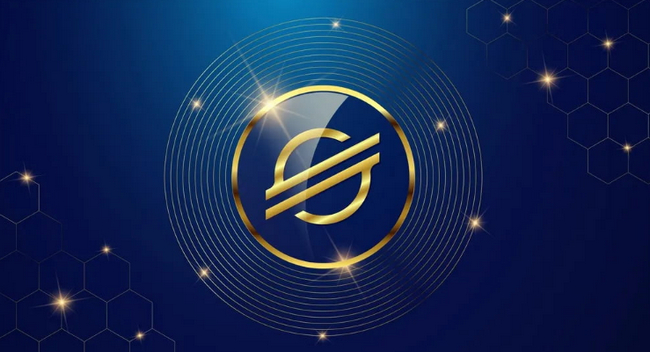
- What are the formal channels for buying XLM coins? Detailed explanation of XLM coin purchase channels
- Sep 18,2024 at 12:10pm
Formal Channels for Purchasing XLM Coins
XLM (Stellar Lumens) is a digital asset native to the Stellar blockchain network. To acquire XLM coins, investors can utilize several formal channels.
1. Centralized Exchanges:
Binance: The world's largest cryptocurrency exchange with high liquidity and trading volume. Supports multiple payment methods including bank transfers and credit cards.
Coinbase: A popular exchange known for its user-friendly interface and strong security measures. Also offers bank transfers and credit card purchases.
Kraken: Another major exchange with a long-standing reputation for security and reliability. Offers wire transfers and SEPA payments for fiat currency deposits.
2. Decentralized Exchanges (DEXs):
StellarX: A decentralized exchange hosted directly on the Stellar network. Provides instantaneous transactions with low fees.
Uniswap: A multi-asset DEX supporting the Ethereum blockchain. Allows users to swap ETH/XLM without an intermediary.
3. Over-the-Counter (OTC) Marketplaces:
Genesis Trading: A leading OTC provider for cryptocurrencies. Offers institutional-grade services for large-volume transactions.
Kraken OTC: Kraken's over-the-counter platform caters to high-net-worth individuals and corporate clients.
4. Peer-to-Peer (P2P) Exchanges:
LocalBitcoins: A global platform connecting buyers and sellers of cryptocurrencies in local currencies. Facilitates cash transactions and bank transfers.
Procedure for Purchasing XLM Coins:
Create an Account: Register on a reputable exchange or OTC marketplace that supports XLM trading.
Fund Your Account: Deposit fiat currency or crypto assets into your account using supported payment methods, such as bank transfers or credit cards.
Place an Order: Navigate to the XLM trading pair and place an order to buy or sell XLM at your desired price and quantity.
Confirm the Transaction: Review the order details and execute the transaction.
Store Your XLM: After the purchase, transfer your XLM coins to a secure wallet for safekeeping.
-
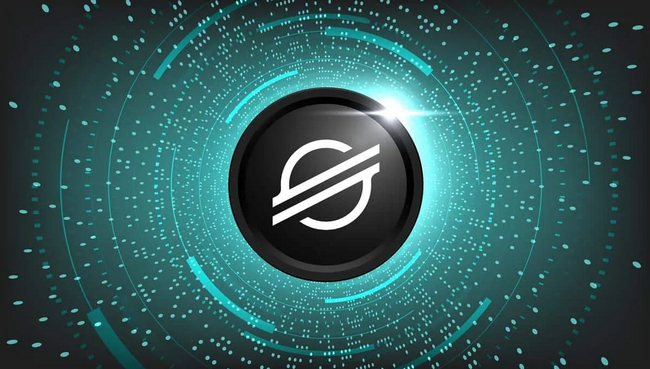
- How to buy XLM coins? Which platform can buy XLM coins?
- Sep 18,2024 at 11:54am
How to Buy XLM Coins: A Comprehensive Guide
Understanding XLM Coins
Stellar Lumens (XLM) is a decentralized blockchain platform designed to facilitate cross-border transactions and provide financial inclusion. The XLM coin is the native cryptocurrency of the Stellar network and serves as a medium of exchange, a store of value, and a bridge currency for various assets.
Where to Buy XLM Coins
XLM coins can be purchased from a variety of cryptocurrency exchanges, including:
Coinbase: A reputable and beginner-friendly exchange with high liquidity and low fees.
Binance: The world's largest cryptocurrency exchange with a wide range of coins and features.
Kraken: A long-standing exchange known for its security and stability.
Gemini: A regulated exchange with low fees and a commitment to compliance.
Crypto.com: A popular exchange with support for multiple currencies and payment options.
How to Buy XLM Coins Step-by-Step
Create an Account: Register with the chosen exchange and provide the necessary KYC (Know Your Customer) documents.
Fund Your Account: Deposit funds into your account using a bank transfer, credit/debit card, or other supported payment method.
Place an Order: Navigate to the XLM trading pair (e.g., XLM/USDT) and enter the desired amount of XLM you want to buy. Specify whether you want to place a market order (executed immediately at market price) or a limit order (executed at a specific price).
Execute the Order: Review the order details and confirm the transaction. The XLM coins will be credited to your exchange wallet.
Additional Considerations
Fees: Each exchange has its own fee structure, so it's important to compare the fees before selecting an exchange.
Security: Choose an exchange with strong security measures, such as two-factor authentication (2FA) and cold storage.
Storage: For long-term storage, consider using a cryptocurrency wallet such as the Ledger Nano X or Trezor Model T.
Market Volatility: The crypto market is highly volatile, so it's crucial to research and understand the risks involved before investing in XLM coins.
-
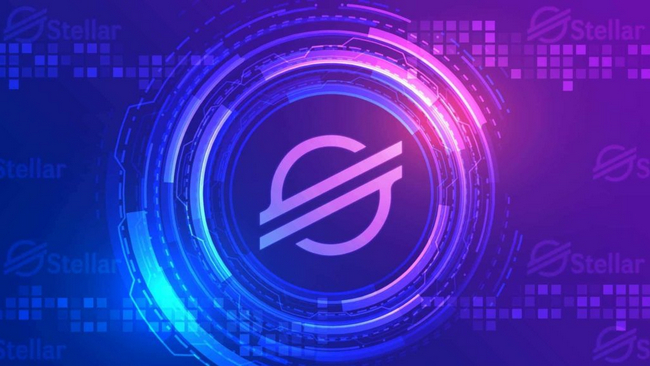
- What is the value of XLM coin? Is it worth investing?
- Sep 18,2024 at 10:36am
Stellar Lumens (XLM): Value and Investment Potential
What is Stellar Lumens (XLM)?
Stellar Lumens is a decentralized blockchain platform designed to facilitate cross-border payments and other financial transactions. It uses a consensus mechanism known as the Stellar Consensus Protocol (SCP) to reach a consensus and validate transactions quickly and efficiently.
Value of XLM Coin
The value of XLM coin is determined by market demand and supply. As of March 8, 2023, the value of XLM is approximately $0.12. The coin's value has fluctuated over time, influenced by factors such as market trends, technological advancements, and adoption by businesses and individuals.
Factors Affecting XLM Coin Value:
Increasing adoption: As more businesses and individuals adopt Stellar for cross-border payments and other financial transactions, the demand for XLM increases, driving up its value.
Technological developments: Improvements to the Stellar blockchain, such as increased scalability or enhanced security features, can positively impact the value of XLM.
Regulatory landscape: Governments and regulatory bodies worldwide have varying stances on the regulation of cryptocurrencies. Favorable regulations can promote adoption and increase the value of XLM.
Market speculation: Like other cryptocurrencies, XLM is subject to market speculation and volatility. News events, rumors, and investor sentiment can significantly influence its price.
Is XLM Worth Investing?
The decision of whether or not to invest in XLM depends on several factors:
Investment horizon: XLM is a volatile asset, and its value can fluctuate rapidly. Long-term investors may be more comfortable with this risk than short-term investors.
Diversification: Cryptocurrencies can provide diversification within a portfolio, but it's essential to have a balanced approach and not rely solely on XLM.
Research and analysis: Thoroughly research Stellar's technology, market adoption, regulatory environment, and competitive landscape before making an investment decision.
Risk appetite: Cryptocurrencies are a high-risk investment, and investors should only allocate funds they can afford to lose.
Conclusion
Stellar Lumens (XLM) is a cryptocurrency designed for cross-border payments and financial transactions. Its value is determined by market demand and supply, and factors such as adoption, technological advancements, and the regulatory landscape can influence its price. While XLM has the potential for growth and value appreciation, it's essential to approach cryptocurrency investments with caution and carefully consider individual risk tolerance and financial goals.
-
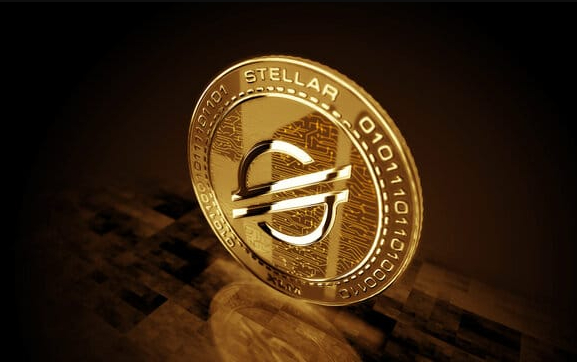
- What is the investment prospect of XLM coin?
- Sep 18,2024 at 10:27am
XLM Coin: Investment Prospects and Market Analysis
Overview
Stellar Lumens (XLM) is a decentralized, open-source blockchain platform designed to facilitate cross-border payments and other financial transactions. Launched in 2014, it has gained significant attention due to its innovative technology and partnerships with major companies.
Investment Prospects
1. Cross-Border Efficiency:
XLM offers a fast and cost-effective solution for international payments, eliminating the need for intermediaries and reducing transaction fees.
This efficiency benefits businesses, consumers, and remittance services worldwide.
2. Institutional Adoption:
Stellar has established partnerships with financial institutions such as IBM, Stripe, and MoneyGram.
These collaborations provide XLM with a strong foundation and access to a vast user base.
3. High Transaction Volume:
Stellar processes around 1 million transactions per day, indicating its growing adoption and scalability.
The increasing transaction volume is a positive signal for the token's value.
4. Low Inflation:
XLM has a built-in inflation mechanism that gradually increases the supply, but at a much lower rate (0.01%) compared to other cryptocurrencies.
This limited inflation preserves the value of the token over time.
Market Analysis
Current Price: $0.07 as of March 1, 2023
Market Cap: $1.5 billion
Volume: $50 million (24-hour average)
Historical Performance:
XLM has experienced significant price fluctuations in the past.
In 2017, it reached an all-time high of $0.87.
The token faced a decline in value during the market downturn of 2018 but has since recovered.
Future Outlook:
Market experts believe that XLM has strong potential for growth in the coming years.
The increasing adoption of cross-border payments and the partnerships with established companies are likely to drive its value.
The low inflation rate ensures that the token's value is preserved.
Risks
Competition: XLM faces competition from other blockchain platforms offering similar services.
Regulatory Challenges: Cryptocurrency regulations around the world are constantly evolving, which could impact XLM's operations.
Market Volatility: The cryptocurrency market is known for its volatility, and XLM's price could fluctuate significantly.
Conclusion
XLM coin has strong investment prospects due to its cross-border efficiency, institutional adoption, high transaction volume, and low inflation. Market analysis suggests that the token has potential for growth in the future, despite the risks associated with cryptocurrency investments. However, investors should conduct thorough research and consider their risk tolerance before making any investment decisions.
-

- What are the ETC coin trading platforms? A list of ETC coin platform app rankings in 2024
- Sep 18,2024 at 10:18am
ETC Coin Trading Platforms: 2024 Platform App Rankings
Background
Ethereum Classic (ETC) is a decentralized blockchain platform known for its immutability and adherence to the original Ethereum blockchain. ETC has gained popularity as a medium for creating and executing smart contracts, which enable decentralized applications (dApps) and other use cases.
ETC Coin Trading Platforms
To facilitate the trading of ETC, numerous trading platforms have emerged. These platforms allow users to buy, sell, and hold ETC, as well as access other trading features like charting and technical analysis.
Top ETC Coin Trading Platforms App Rankings 2024
Based on market research and analysis, the following list provides the top ETC coin trading platform apps in 2024:
1. Binance
Market-leading platform with high liquidity and a wide asset selection
Robust security measures and a proven track record
User-friendly interface and advanced charting tools
2. Coinbase
Established platform with a reputation for reliability and security
Simple and intuitive user interface
Supports a limited number of cryptocurrencies, including ETC
3. Kraken
Professional-grade platform with advanced trading features
Strong security and compliance protocols
Competitive fees and customizable trading tools
4. Bittrex
Cryptocurrency-focused exchange with a wide range of altcoins
Strong security measures and high-frequency trading capabilities
Less user-friendly compared to other platforms
5. Poloniex
Long-standing exchange with a global presence
High liquidity and a diverse selection of trading pairs
Can be complex for beginner traders
Honorable Mentions
KuCoin
Huobi
Gate.io
Factors to Consider When Choosing a Platform
When selecting an ETC trading platform, consider the following factors:
Security: Reputation, two-factor authentication, encryption
Liquidity: Order depth, trading volume
Fees: Trading fees, withdrawal fees
User Interface: Ease of use, intuitive design
Features: Advanced trading tools, charting, portfolio management
Conclusion
The aforementioned platforms provide a comprehensive range of options for ETC trading. By evaluating these factors and understanding their specific needs, users can select the platform that best aligns with their trading goals. The rankings provided in this article are subject to change as the industry evolves and new platforms emerge.
-
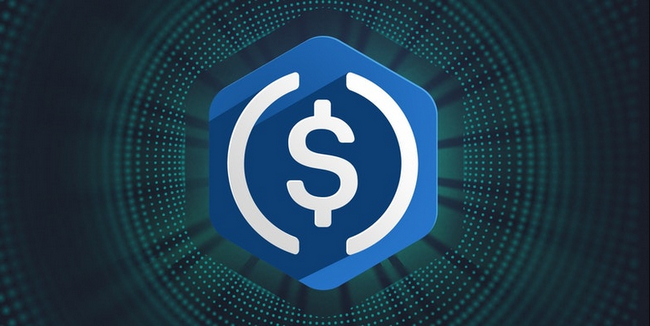
- What is USDC?
- Sep 13,2024 at 11:13am
USDC: Understanding the Stablecoin Backed by the US Dollar
What is USDC?
USDC (USD Coin) is a stablecoin pegged to the US dollar, meaning its value is intended to remain stable at approximately $1. It is a cryptocurrency backed by fiat currency (USD) reserves. USDC was launched in 2018 by Centre Consortium, a collaboration between Circle Internet Financial and Coinbase.
How USDC Works
USDC is a fiat-collateralized stablecoin, which means that it is backed by an equivalent amount of USD held in reserve. For every USDC in circulation, there is $1 held in a bank account controlled by Circle. This ensures that USDC can always be redeemed for $1, stabilizing its value.
Benefits of USDC
Price stability: USDC is pegged to the US dollar, providing stability and predictability in its value.
Transparency: Independent auditors monitor USDC's reserves to ensure that there is a 1:1 ratio between USDC and USD held in custody.
Speed and efficiency: USDC transactions are processed quickly and efficiently on the blockchain.
Global utility: USDC can be used for cross-border payments, remittances, and as a store of value.
Uses of USDC
Payments: USDC can be used as a means of payment for goods and services both online and offline.
Remittances: USDC allows for fast and cost-effective money transfers across borders.
Stablecoin trading: USDC is widely used for trading other cryptocurrencies in markets.
Store of value: USDC can be used as a safe haven asset during periods of market volatility or for long-term storage of value.
Conclusion
USDC is a reliable and stable cryptocurrency with a value pegged to the US dollar. It offers transparency, efficiency, and global utility as a payment method, store of value, and trading asset. As the cryptocurrency industry continues to evolve, USDC is well-positioned to play a significant role in shaping the future of digital finance.
-
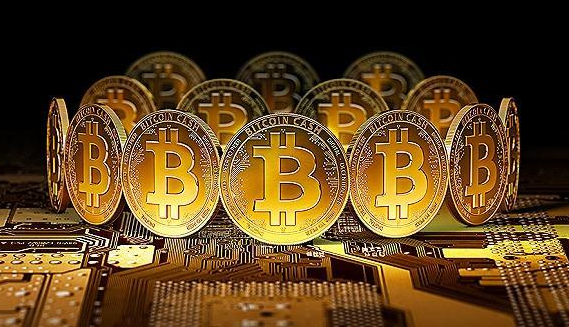
- How many Bitcoins are left to be mined?
- Aug 23,2024 at 06:22pm
By 2140, the projected year for complete Bitcoin mining, approximately 1.68 million bitcoins, or 8% of the total supply, will remain to be mined.
How Many Bitcoins Are Left to Be Mined?
Bitcoin, the world's first and most well-known cryptocurrency, has a finite supply of 21 million coins. As of August 2023, approximately 92% of these bitcoins have been mined and are in circulation. This means that only about 1.68 million bitcoins remain to be mined.
Halving Events and Mining Rate
At regular intervals of approximately every four years, Bitcoin undergoes a "halving event." During these events, the block reward for miners is cut in half. This means that the number of new bitcoins entering the market each day is reduced, slowing down the rate at which the total supply increases.
The next halving event is expected to occur in 2024, at which point the block reward will decrease from the current 6.25 bitcoins to 3.125 bitcoins. This reduction will further slow down the rate of Bitcoin mining and bring us closer to the 21 million supply cap.
Estimated Timeline for Remaining Bitcoin Mining
According to current estimates, it is projected that all 21 million bitcoins will be mined by the year 2140. This timeline is based on the assumption that the block reward halving events continue as scheduled and that the mining difficulty remains constant.
Factors Affecting Bitcoin Mining
The rate at which bitcoins are mined can vary depending on several factors, including:
- Hashrate: The hashrate refers to the combined computing power of all miners in the Bitcoin network. A higher hashrate means that more blocks are being processed, leading to a faster mining rate.
- Mining Difficulty: The mining difficulty is adjusted automatically to ensure that the average block time remains at around 10 minutes. If the hashrate increases, the mining difficulty also increases, making it harder to find new blocks.
- Mining Hardware: The efficiency of mining hardware can impact the mining rate. Newer and more powerful mining machines can achieve higher hashrates, resulting in faster block discovery.
Implications of the Limited Bitcoin Supply
The limited supply of Bitcoin has several implications, including:
- Scarcity: As the number of bitcoins in circulation approaches 21 million, each individual bitcoin becomes scarcer, which could lead to increased value.
- Store of Value: Bitcoin's scarcity makes it a potential store of value, as it is not subject to the same inflation concerns as fiat currencies.
- Future Inflation: Once all 21 million bitcoins have been mined, there will be no new inflation introduced into the system, unless changes are made to the Bitcoin protocol.
As Bitcoin continues its journey towards the 21 million supply cap, it remains to be seen how this will affect its price and value in the long term.
-

- Why does Bitcoin halve?
- Aug 23,2024 at 06:02pm
Bitcoin halving, occurring every four years, aims to curb inflation by decreasing the block mining reward by 50%, ensuring the cryptocurrency's long-term value.
Why Does Bitcoin Halve?
Introduction
Bitcoin's halving event is a critical part of its monetary policy. It is designed to control the supply and inflation rate of Bitcoin.
What is Bitcoin Halving?
Bitcoin halving is a process that occurs approximately every four years. During a halving, the reward for mining a block of Bitcoin is reduced by 50%. This reduces the issuance rate of new Bitcoins and slows down the rate at which new Bitcoins enter circulation.
Reasons for Bitcoin Halving
There are several reasons why Bitcoin halving is implemented:
- Control Inflation: By reducing the reward for mining, halving helps to control the inflation rate of Bitcoin. This ensures that the supply of Bitcoin remains limited, preventing excessive inflation.
- Scarcity and Value: The limited supply of Bitcoin makes it a scarce asset. This scarcity helps to maintain its value and demand.
- Incentivize Early Adoption: The halving schedule creates an incentive for early adopters of Bitcoin to hold onto their coins. As the supply dwindles and the value of Bitcoin potentially rises, early investors are rewarded for their initial support.
Timeline of Bitcoin Halvings
The following timeline shows the halving dates and block heights for Bitcoin:
- Halving 1: January 3, 2013 (Block 210,000) - Reward reduced from 50 BTC to 25 BTC per block
- Halving 2: July 9, 2016 (Block 420,000) - Reward reduced from 25 BTC to 12.5 BTC per block
- Halving 3: May 11, 2020 (Block 630,000) - Reward reduced from 12.5 BTC to 6.25 BTC per block
- Estimated Halving 4: May 2024 (Block Height TBD) - Reward reduced from 6.25 BTC to 3.125 BTC per block
- Estimated Halving 5: May 2028 (Block Height TBD) - Reward reduced from 3.125 BTC to 1.5625 BTC per block
Impact of Bitcoin Halving
Historically, Bitcoin halving events have had a significant impact on the cryptocurrency market. They often coincide with price spikes and increased volatility. This is due to increased demand for the limited supply of Bitcoin and speculation about its future value.
Conclusion
Bitcoin halving is a critical component of Bitcoin's monetary policy. It serves to control inflation, maintain scarcity, and incentivize early adoption. The halving schedule is predetermined and occurs approximately every four years. Understanding the reasons behind halving and its potential impact on the market is essential for investors and enthusiasts alike.
-

- How many Bitcoins are there in the world?
- Aug 23,2024 at 06:00pm
As of October 2023, the total number of Bitcoins in circulation is approximately 19.2 million, constituting 92% of the eventual supply limit of 21 million.
How Many Bitcoins Are There in the World?
Overview:
Bitcoin, the pioneering cryptocurrency, has garnered immense attention and widespread adoption since its inception in 2009. As of October 2023, the total number of Bitcoins in circulation stands at approximately 19.2 million. This number represents a significant milestone, as it approaches the finite supply limit of 21 million Bitcoins.
Breakdown of Bitcoins:
- Circulating Supply: 19.2 million BTC
- Lost or Unrecoverable: Estimated 3.7 million BTC
- Remaining Supply: 1.8 million BTC
Factors Affecting Total Supply:
- Issuance Rate: New Bitcoins are created through the process of mining, subject to a fixed issuance schedule. The supply increases by approximately 900 BTC daily.
- Storage and Security: Given Bitcoin's irreversible transaction nature, lost or stolen coins are effectively removed from circulation.
- Mining Difficulty: The difficulty of mining new Bitcoins increases over time, slowing down the issuance rate and further limiting the supply.
Implications of Limited Supply:
- Scarcity: The finite supply of Bitcoins creates an inherent element of scarcity, potentially driving up their value.
- Deflationary Nature: As the number of new Bitcoins issued diminishes, the existing supply becomes more valuable over time.
- Store of Value: Bitcoin's limited supply has led some investors to view it as a potential alternative asset or store of value.
Future of Bitcoin Supply:
The total supply of Bitcoin is expected to reach 21 million around the year 2140. After this point, no new coins will be created, and the limited supply will become even more valuable.
Conclusion:
As of October 2023, the total number of Bitcoins in circulation is approximately 19.2 million. With a finite supply of 21 million, the scarcity of Bitcoin is a key factor driving its value and potential use as a store of value.
-

- How many Bitcoins are generated every day?
- Aug 23,2024 at 05:58pm
Each day, approximately 900 new Bitcoins enter circulation, reward miners verifying transactions and securing the decentralized network.
How Many Bitcoins Are Generated Every Day?
Bitcoin, the world's first and most popular cryptocurrency, is a digital asset created using a process called mining. Mining involves solving complex mathematical equations to verify Bitcoin transactions and add new blocks to the blockchain, which is a distributed ledger that records all Bitcoin transactions. As a reward for their efforts, miners are rewarded with newly minted Bitcoins.
The number of Bitcoins generated every day is variable and depends on several factors, including:
- Block time: The average time it takes to mine a block is approximately 10 minutes.
- Hashrate: The combined computational power of all Bitcoin miners on the network.
- Block reward: The number of Bitcoins reward miners receive for verifying a block.
Calculating Daily Bitcoin Production
The formula to calculate the approximate number of Bitcoins generated every day is:
Daily Bitcoin Production = Block Reward * (60 minutes / Block Time) * 24 hoursUsing this formula, we can estimate the daily Bitcoin production based on current network conditions:
- Block Reward: 6.25 BTC
- Block Time: 10 minutes
- 24 hours: 1440 minutes
Daily Bitcoin Production = 6.25 BTC * (60 / 10) * 1440 = 900 BTCTherefore, approximately 900 new Bitcoins are generated every day.
Factors Affecting Daily Bitcoin Production
- Halving: The Bitcoin block reward is halved approximately every four years, reducing the amount of new Bitcoins entering circulation.
- Hashrate: An increase in hashrate makes it more difficult to mine Bitcoins, leading to a decrease in daily production.
- Price Volatility: High Bitcoin prices can attract more miners, increasing the hashrate and reducing daily production. Conversely, low prices can discourage miners, reducing the hashrate and increasing production.
Conclusion
The number of Bitcoins generated every day fluctuates based on network conditions and factors affecting mining difficulty. Currently, approximately 900 new Bitcoins are estimated to be produced daily. However, it's important to note that this number can vary over time as the Bitcoin network evolves and adapts.
-
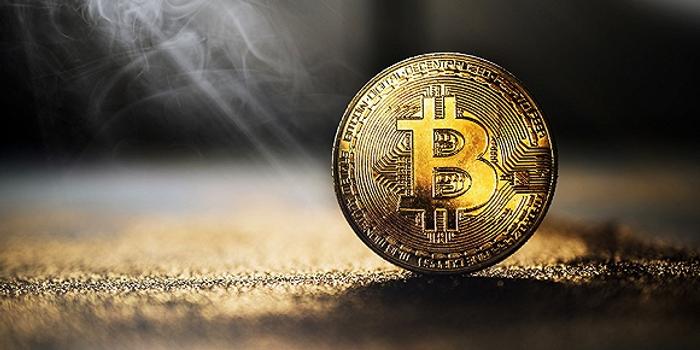
- When will all Bitcoins be mined?
- Aug 23,2024 at 05:54pm
According to the current mining parameters, all 21 million Bitcoins are projected to be mined by the year 2240, taking into account the increasing mining difficulty and the halving of block rewards every four years.
When Will All Bitcoins Be Mined?
Bitcoin, the revolutionary cryptocurrency, has a finite supply of 21 million coins. This means that there is a limit to the number of Bitcoins that can ever be created. So, when will all Bitcoins be mined?
Mining Difficulty and Block Time:
The process of creating new Bitcoins, known as mining, is computationally intensive and requires specialized hardware. The difficulty of mining increases with the number of miners, ensuring that it takes approximately 10 minutes to mine a new block. This means that around 144 blocks are mined each day.
Block Reward Halving:
Every 210,000 blocks (roughly four years), the reward for mining a block is halved. This is a built-in mechanism to slow down the rate of Bitcoin production. The current block reward is 6.25 BTC, and the next halving is expected to occur in May 2024.
Calculation of Mining Completion:
Using these parameters, we can estimate when all Bitcoins will be mined. By adding up the number of blocks mined daily (144) with the number of blocks remaining to be mined (21,000,000 - blocks already mined), we get approximately 146,000 blocks left to mine.
Multiplying this value by the average block time of 10 minutes gives us a total of approximately 1,460,000 minutes left to mine. Converting this to years yields:
1,460,000 minutes / (60 minutes/hour * 24 hours/day * 365 days/year) ≈ **215 years**Estimated Timeline:
Based on this calculation, and assuming a stable mining difficulty and block time, all Bitcoins are projected to be mined around the year 2240.
Factors Affecting Completion Timeline:
However, it is important to note that this projection assumes that the mining environment remains relatively stable. Factors such as advances in mining technology or changes in the economic landscape could affect the mining difficulty and block time, thereby altering the estimated completion timeline.
Conclusion:
Given the current mining parameters and the built-in halving mechanism, it is estimated that all Bitcoins will be mined approximately 215 years from now, around the year 2240. This projection highlights the finite nature of Bitcoin and its potential implications for the cryptocurrency market in the long term.
-

- How many Bitcoins have been mined?
- Aug 23,2024 at 05:54pm
By January 2023, approximately 92% of all Bitcoins had been mined, with estimates suggesting that the remaining 1.7 million will be mined by 2140.
How Many Bitcoins Have Been Mined?
As of January 2023, approximately 19.3 million Bitcoins have been mined out of a total supply of 21 million. The remaining 1.7 million Bitcoins are expected to be mined by 2140.
Bitcoin Mining Process
Bitcoin mining is the process of verifying and adding new transactions to the Bitcoin blockchain. Miners use specialized computer hardware to solve complex mathematical puzzles. The first miner to solve the puzzle receives a block reward in the form of newly minted Bitcoins.
Halving Schedule
The Bitcoin halving schedule reduces the block reward by half every 210,000 blocks (approximately every four years). This means that the number of Bitcoins mined per block decreases over time, slowing down the rate at which new Bitcoins are created.
Current Mining Rewards
As of January 2023, the block reward for mining a Bitcoin is 6.25 BTC. This is expected to halve again in 2024.
Difficulty Adjustment
The Bitcoin network automatically adjusts the mining difficulty based on the hashrate, which is a measure of the total computing power used to mine Bitcoin. This ensures that the average block mining time remains around 10 minutes.
Estimated Remaining Bitcoins
Given the halving schedule and the current mining rate, it is estimated that the remaining 1.7 million Bitcoins will be mined by 2140. However, the actual date may vary depending on changes in the network's hashrate and regulation.
Implications of Finite Supply
The Bitcoin supply cap of 21 million has significant implications for its value and long-term behavior:
- Deflationary Effect: As the supply of new Bitcoins decreases over time, Bitcoin becomes a more scarce asset, potentially leading to price appreciation.
- Store of Value: The finite supply makes Bitcoin a potential store of value, similar to gold or other precious metals.
- Limited Inflation: Unlike fiat currencies, which can be inflated by central banks, Bitcoin's supply is controlled and predictable.
-
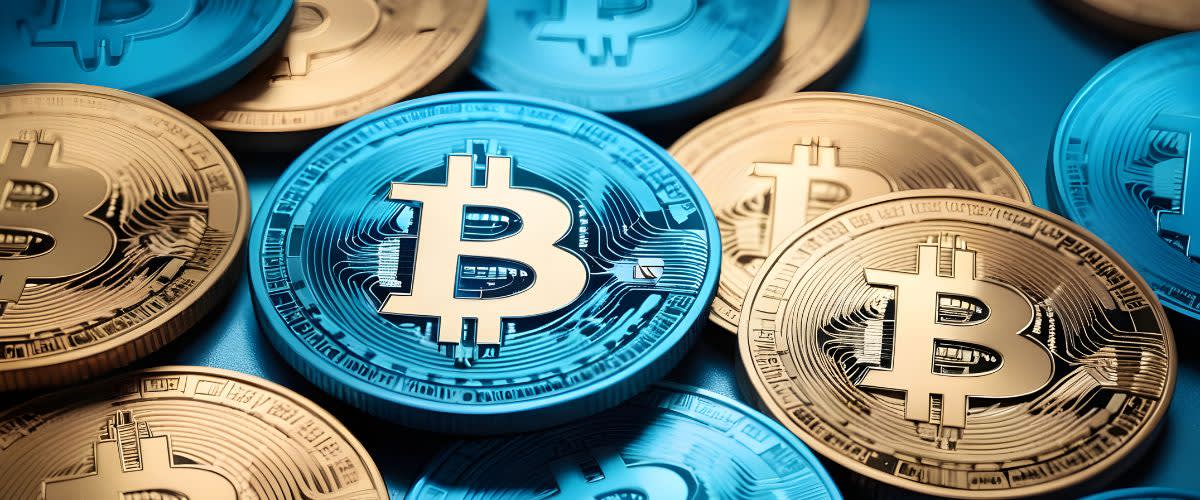
- What can Bitcoin be used for?
- Aug 23,2024 at 05:52pm
Bitcoin, a decentralized digital currency, offers secure and anonymous transactions with applications in online payments, cross-border transfers, and as a digital asset.
What is Bitcoin?
Bitcoin is a decentralized digital currency that enables secure and anonymous transactions over the internet. Unlike traditional fiat currencies issued by central banks, Bitcoin is not subject to government or financial institution control. Instead, it operates on a peer-to-peer network, known as the blockchain, where transactions are recorded and verified by distributed nodes.
Uses of Bitcoin
Bitcoin's unique characteristics make it suitable for a wide range of applications:
1. Online Payments: Bitcoin can be used to make online purchases without the need for intermediaries like banks or credit card companies. This offers lower transaction fees, faster processing times, and increased privacy.
2. Cross-Border Transactions: Bitcoin allows for seamless international money transfers, eliminating currency exchange fees, delays, and cross-border restrictions associated with traditional banking systems.
3. Digital Asset: Bitcoin is increasingly recognized as a legitimate digital asset, similar to gold or precious metals. Investors may purchase and hold Bitcoin as a store of value or as a hedge against inflation.
4. Privacy and Anonymity: Bitcoin transactions are pseudonymous, meaning they are not directly linked to personal identities. This provides a high level of privacy that is not available with traditional financial systems.
5. Remittances: Bitcoin can facilitarte remitent remittrances, which involves sending money to individuals in other countries. It offers faster delivery, lower fees, and increased accessibility compared to traditional money transfer services.
Limitations of Bitcoin:
While Bitcoin has many advantages, it also faces certain limitations:
1. Volatility: Bitcoin's price is highly volatile, making it a risky investissement for some.
2. Limited Acceptance: Although Bitcoin is gaining popularity, it is still not widely accepted as a form of payment compared to traditional currencies.
3. Scalability Issues: As Bitcoin's user base grows, the blockchain network may face scalability issues that could slow down transaction processing times.
4. Regulatory Uncertainties: The regulatory landscape surrounding Bitcoin is still evolving, and there is uncertainty regarding its legal status in some jurisdictions.
Despite these challenges, Bitcoin remains arevolutionary and influential technology with the potential to transform the financial ecosystem. As it matures and gains wider acceptance, it is likely to play an increasingly important role in global commerce and finance.
-

- What is Bitcoin?
- Aug 23,2024 at 05:46pm
Bitcoin's decentralized network and secure blockchain technology have established it as a valuable asset in the global financial landscape.
What is Bitcoin: A Comprehensive Guide
Introduction
Bitcoin is a decentralized digital currency that has gained widespread attention over the past decade. It was created in 2009 by an anonymous developer known as Satoshi Nakamoto. Bitcoin operates on a blockchain, a secure and transparent ledger that records all transactions.
Key Features of Bitcoin
- Decentralized: Bitcoin is not controlled by any central authority, such as a bank or government. Instead, it is maintained by a network of computers spread across the globe.
- Scarce: There is a limited supply of Bitcoin, capped at 21 million coins. This scarcity contributes to its value.
- Secure: Bitcoin transactions are encrypted and validated through a rigorous verification process, making it highly secure.
- Anonymous: While Bitcoin transactions are recorded on the blockchain, the identities of users are not linked to their addresses. This provides a degree of anonymity.
How Bitcoin Works
Bitcoin operates on a peer-to-peer network, meaning that users can directly send and receive coins without a middleman. When a transaction occurs, it is broadcast to all nodes on the network. Nodes verify the transaction based on its validity and then add it to the blockchain.
The blockchain is a tamper-proof ledger that stores a record of every Bitcoin transaction. This ensures transparency and security, as any attempt to alter the ledger would require the cooperation of a majority of the network.
Bitcoin Mining
Bitcoin is created through a process called mining. Miners use specialized computers to solve complex mathematical equations. When a miner finds a solution, they are rewarded with newly created Bitcoin. Mining also verifies and secures the blockchain.
Uses of Bitcoin
Bitcoin has a wide range of uses, including:
- Payments: Bitcoin can be used to make online and offline purchases, either directly or through third-party services.
- Investment: Bitcoin has become a popular investment asset due to its potential for growth and volatility.
- Remittances: Bitcoin is used to facilitate cheaper and faster跨-border transactions, particularly in countries with high remittance fees.
- Decentralized Applications: Bitcoin is the underlying currency for various decentralized applications (dApps), such as smart contracts and decentralized finance (DeFi).
Advantages of Bitcoin
- Lower transaction fees: Bitcoin transactions are typically cheaper than traditional bank transfers, especially for cross-border payments.
- Decentralization: Bitcoin eliminates the need for third parties and provides users with greater control over their finances.
- Scarcity: The limited supply of Bitcoin contributes to its perceived value and potential for inflation resistance.
- Security: Bitcoin's blockchain and cryptographic security measures make it a highly secure and fraud-resistant currency.
Challenges of Bitcoin
- Volatility: Bitcoin's price is highly volatile, making it a risky investment for some users.
- Regulation: Bitcoin is not yet widely regulated, which can create uncertainty and legal challenges for businesses and users.
- Scalability: Bitcoin's network has limitations in terms of handling high transaction volume, which can lead to congestion and higher fees.
- Energy consumption: Bitcoin mining requires significant energy consumption, which has raised environmental concerns.
Conclusion
Bitcoin is a revolutionary technology that has the potential to transform the global financial landscape. Its key features of decentralization, scarcity, security, and anonymity make it a unique and valuable asset. While Bitcoin faces challenges, it is expected to continue to evolve and play a significant role in the future of finance and technology.
-

- Which country's currency is Bitcoin?
- Aug 23,2024 at 05:20pm
Bitcoin's decentralized nature and global reach have challenged traditional financial systems, making it a subject of intrigue worldwide, despite the mystery surrounding its country of origin.
The Revolutionary Currency: Bitcoin and Its Country of Origin
Bitcoin, the first decentralized digital currency, has captured the world's attention. Unlike traditional fiat currencies, which are issued and controlled by governments, Bitcoin operates on a blockchain network, a secure and transparent ledger system. This eliminates the need for a central authority, fostering anonymity and reducing transaction fees.
Country of Origin
Bitcoin was created by a pseudonymous individual or group known as Satoshi Nakamoto. The exact identity of the creators remains unknown, but the first Bitcoin block was mined in 2009. While some speculate that Nakamoto could be located anywhere, the country of origin for Bitcoin cannot be definitively established.
Global Reach
Despite its unknown origin, Bitcoin has become a global phenomenon. It is accepted as a form of payment in many countries, and its value has skyrocketed over the past decade. Since it is not tied to any specific country or government, Bitcoin transcends borders and operates as a global currency.
Challenges and Controversies
Bitcoin's decentralized nature comes with both advantages and challenges. While it provides anonymity and independence, it can also be used for illicit activities. Additionally, its value fluctuations can be volatile, making it a risky investment for some. These challenges have led to differing regulations and attitudes towards Bitcoin around the world.
Conclusion
The country of origin of Bitcoin remains a mystery, but its impact has been felt globally. As a decentralized digital currency, Bitcoin transcends borders and challenges traditional financial systems. Despite its volatility and regulatory uncertainties, it continues to capture the attention of investors, businesses, and governments alike. As the world evolves towards a more digital future, Bitcoin's role as a global currency will undoubtedly continue to be debated and shaped.
-
Decentralized Trading Platform Jupiter Acquires Blockchain Explorer SolanaFM to Expand Its Capabilities
- Sep 20,2024 at 04:01pm
-
Donald Trump Just Used Bitcoin (BTC) to Buy Burgers for His Supporters
- Sep 20,2024 at 04:00pm
-
ETFSwap (ETFS) To Rank As The Most Anticipated Token on Ethereum
- Sep 20,2024 at 04:00pm
-
The 50 pence piece has become the most valued and collected coin in the UK
- Sep 20,2024 at 03:58pm
-
The 50 pence piece has become the most valued and collected coin in the UK
- Sep 20,2024 at 03:58pm
-
Dogwifhat (WIF) Price Surges 9% as Investors Enter Buying Frenzy for the Meme Coin
- Sep 20,2024 at 03:52pm









































